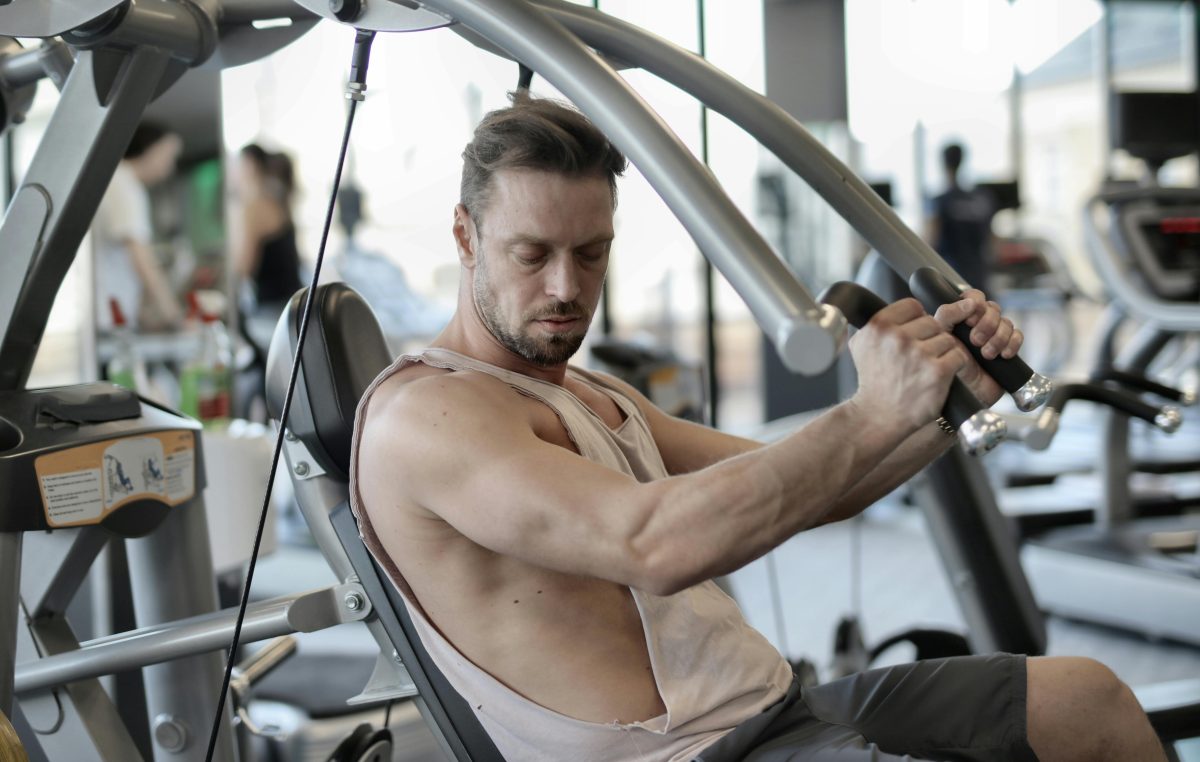Last Updated on: 14th July 2024, 10:57 am
Introduction to the Power of Music in Enhancing Workout Performance

Across gyms, parks, and living rooms worldwide, music has become an indispensable partner in the pursuit of physical fitness. This universal integration of melodies with muscle movement is no mere coincidence. Historically, music and physical activity have shared a symbiotic relationship, tracing back to ancient civilizations where rhythmic beats accompanied labor and warfare, boosting morale and endurance. Today, this ancient alliance persists, evolving into a sophisticated tool that significantly enhances workout performance.
The objective of this article is to delve into the profound impact of music on the intensity and effectiveness of workouts. By exploring the psychological and physiological responses elicited by music, we aim to uncover how carefully curated playlists can transform a routine exercise session into a more engaging, enjoyable, and productive experience. Prepare to be enthralled by the science and magic behind the power of music in amplifying your workout intensity.
The Science Behind Music and Physical Performance

Psychological Effects: Altering Perception of Effort and Fatigue
- Music possesses a unique power to modify our perception of effort during a workout. It acts as a distraction, diverting the mind from sensations of fatigue and discomfort.
- This psychological shift not only allows for longer exercise duration but also enhances the overall quality of the workout.
- The right tracks can make challenging routines feel more achievable, pushing you to exert without feeling the full weight of the effort.
Physiological Effects: Boosting Heart Rate and Adrenaline
- On a physiological level, music influences the body’s internal rhythms, including heart rate and adrenaline production.
- Fast-paced tunes can stimulate an increase in heart rate, preparing the body for intense activity.
- This natural boost in adrenaline heightens energy levels, improving workout efficiency and stamina.
The Role of Tempo and Rhythm
- Tempo and rhythm are not just musical elements; they are the heartbeat of any workout.
- The synchronization of movement with a beat can optimize physical performance, making exercises feel smoother and more natural.
- This alignment not only helps in maintaining a steady pace but also in maximizing movement efficiency.
Understanding the science behind music and physical performance unveils the potential to transform a mundane workout into an exhilarating adventure. It’s not just about moving to the beat; it’s about harnessing the psychological and physiological enhancements music offers. So, the next time you plug in your headphones, remember you’re not just listening to music—you’re engaging in a scientifically-backed method to supercharge your physical performance.
Types of Music That Boost Workout Intensity

High-Energy Genres: Powering Through with EDM, Hip Hop, and Rock
- EDM (Electronic Dance Music), with its pulsating beats, propels you forward, transforming a strenuous session into a vibrant dance party.
- Hip hop, with its rhythmic bass and motivational lyrics, injects a dose of swagger into your stride.
- Rock music, with its powerful guitar riffs and drum solos, adds an edge to your workout, pushing you to break barriers.
Personalized Playlists: The Key to Tailored Motivation
- A song that resonates on a personal level can motivate more than any generic high-tempo track.
- Lyrics that speak to your journey, beats that match your mood, and melodies that uplift your spirit create a deeply personal workout experience.
- This tailored approach ensures that every beat and lyric propels you forward, turning each session into a personal triumph.
The Role of Tempo: BPM Guidelines for Workout Phases
- For warm-ups and cool-downs, songs within the 90-110 BPM range set a moderate pace, preparing the body for exercise and aiding in recovery.
- High-intensity workouts, however, demand tracks ranging from 140-180 BPM, aligning with the heart’s pumping during vigorous activity.
Integrating high-energy music genres, personalized playlists, and tempo-specific tracks into your workout regimen can significantly enhance the intensity and enjoyment of your exercise sessions. By understanding and applying these musical strategies, you transform your workouts from routine to remarkable, ensuring each session is not just effective but also deeply satisfying.
Music as a Motivational Tool in Fitness Settings

Case Studies: Success Stories
- One individual credits her marathon success to a carefully curated playlist that kept her motivated through the grueling training and the race itself.
- Fitness classes, too, have seen remarkable engagement levels when instructors synchronize workouts with dynamic beats, turning routine exercises into exhilarating experiences that participants look forward to.
The Psychological Boost
- Music’s power extends beyond the physical, tapping into the psychological.
- It serves as a bridge over mental barriers, enabling individuals to push beyond their perceived limits.
- The right song at the right moment can transform doubt into determination, fatigue into resilience.
Incorporating Music into Various Workout Types
- Strength training sessions are supercharged with powerful beats that enhance focus and power output.
- Cardio workouts, matched with high-tempo tracks, turn endurance tests into rhythm-fueled journeys.
- HIIT sessions leverage music’s tempo changes to signal sprint and recovery phases, making the intense workout structure clear and manageable.
- Even yoga practices find a place for music, with soothing melodies enhancing the meditative aspect, deepening relaxation, and focus.
Integrating music into fitness routines is not just about playing background tunes; it’s about strategically selecting and aligning music with the workout’s pace, intensity, and goal. This thoughtful incorporation of music transforms exercise from a mundane task into an engaging, enjoyable, and highly effective experience. Whether it’s through individual playlists or instructor-curated tracks, music stands as a powerful tool in elevating fitness experiences, making every workout session not just about physical gains but also about achieving a mental and emotional high.
The Impact of Music on Workout Consistency and Longevity

Music as a Routine Enhancer
Imagine lacing up your sneakers, the anticipation of a workout ahead. Now, add your favorite tunes to the mix. Suddenly, the routine transforms. Music, with its power to elevate mood and energy levels, turns the mundane into the enjoyable. It’s not just about moving; it’s about experiencing. This shift in perception makes workouts more sustainable, encouraging consistency.
Correlation Between Music, Motivation, and Workout Frequency
There’s a rhythm to motivation, a beat that drives us forward. Music taps into this rhythm, boosting our desire to move. Studies show that those who exercise with music tend to do so more frequently. It’s the difference between dragging yourself to the gym and dancing your way there. The right playlist not only gets you started but keeps you going.
Long-term Benefits
Consistency is key in achieving fitness goals. Music, by making workouts more enjoyable, promotes this consistency. Over time, the benefits accumulate. Enhanced cardiovascular health, improved muscle strength, and mental well-being are just a few of the rewards. Music doesn’t just change how we exercise; it changes the impact of exercise on our lives.
Integrating music into your workout routine is more than a strategy; it’s a game-changer. It’s about creating a fitness journey that you look forward to, one beat at a time. So, the next time you prepare for a workout, remember: your playlist is just as important as your exercise plan. Let the music play, and let the gains begin.
Implementing Music Into Your Workout Routine Effectively

Creating the Perfect Playlist
- Start by selecting songs that resonate with your energy levels and aspirations.
- A mix of genres can keep you mentally stimulated, while a steady progression of tempos can mirror the intensity of your workout phases.
- Organize your music to build up from warm-up to peak intensity, then back down for cool-down, ensuring each phase of your workout is supported by the right beats.
Technology and Apps: Your Musical Workout Companions
- In today’s digital age, numerous apps and tools are at your disposal to streamline your music curation process.
- Apps like Spotify and Apple Music offer workout-specific playlists that are regularly updated.
- Others like Fit Radio and RockMyRun allow you to select music based on your desired BPM.
- Utilize these technologies to save time and keep your focus on the workout ahead.
Adjusting Music Choices Over Time
- As your fitness journey evolves, so should your playlist.
- Regularly refreshing your music selection prevents boredom and keeps you motivated.
- Pay attention to how different tracks affect your performance and mood.
- Swap out songs that no longer inspire you and introduce new ones that align with your changing fitness levels and preferences.
Effectively integrating music into your workout routine can be transformative, turning a simple exercise session into a powerful symphony of physical exertion and mental stimulation. With the right playlist, technology, and adaptability, your workout music will not just accompany you, but propel you towards your fitness goals with every beat.
In Closing
Music fuels your workout journey, transforming effort into exhilaration. It bridges the gap between physical exertion and mental motivation, making each session more enjoyable and effective. Through the strategic use of high-energy genres, personalized playlists, and tempo-specific tracks, music becomes a powerful ally in achieving fitness goals. Let the rhythm guide your routine, inspiring consistency, and elevating performance. Embrace the beat as your partner in fitness, and let every workout be a step towards a healthier, happier you.
How Music Influences Workout Intensity FAQs
Listening to music post-workout can aid in recovery by reducing stress and promoting relaxation, which facilitates the body’s healing processes. Slow-tempo music can help lower the heart rate and calm the mind, speeding up the recovery time by shifting the body into a state of rest more quickly. This can be particularly beneficial in reducing muscle soreness and improving overall well-being after intense exercise.
Music can improve focus during workouts by providing a mental distraction from fatigue and discomfort, allowing individuals to concentrate on their physical performance. It creates an auditory stimulus that occupies the mind, which can reduce the perception of effort and make the workout feel easier. This can lead to improved performance and a more efficient workout session.
Music can reduce the perception of effort during a workout by providing a pleasant distraction from pain and exertion, making physical activity feel less strenuous. The engaging qualities of music can occupy the mind, shifting focus away from physical sensations of fatigue. This can lead to a more enjoyable workout experience and potentially increase the duration and intensity of the exercise session.
Music preference significantly influences the effectiveness of workout music, as individuals are more likely to benefit from listening to genres and tracks they enjoy. Familiar and preferred music can boost mood and motivation more than unfamiliar or disliked tracks, leading to a more engaging and effective workout. This personal connection to the music can enhance the psychological benefits, including increased stamina and a more positive workout experience.
Yes, music can significantly enhance workout performance by synchronizing the body’s movements to the beat, which can increase efficiency and stamina. The right tempo can motivate individuals to push harder and endure longer during physical activities. This is because music can distract from pain and fatigue, elevate mood, and increase endurance.
The genre of music matters when selecting workout tunes as it should align with personal preferences and the type of exercise to maximize motivational effects. Energetic genres like pop, hip-hop, and electronic are often preferred for cardio and high-intensity workouts due to their fast beats and motivating lyrics. Softer, more melodic genres are suitable for low-intensity workouts, helping to maintain a calm and focused mindset.
Music can affect the heart rate during exercise by either elevating or calming it, depending on the tempo of the music played. Fast-paced music tends to increase heart rate, making it ideal for high-intensity workouts, while slow-paced music can help decrease heart rate, suitable for cool-down phases and low-intensity exercises. This physiological response to music can be used strategically to control workout intensity and improve overall cardiovascular health.
Music influences endurance and stamina by diverting the mind from sensations of fatigue, allowing exercisers to work out for longer periods. The rhythmic elements of music can encourage a steady pace, reducing energy expenditure and increasing efficiency. This psychological and physiological response to music can significantly extend the duration and intensity of a workout session.
The tempo of music influences workout intensity by dictating the pace of exercise, with faster beats encouraging more vigorous activity. High-tempo music, usually between 120 to 140 beats per minute (BPM), is ideal for high-intensity workouts like cardio, as it helps to increase heart rate and motivation. Conversely, slower tempos are better suited for low-intensity exercises, aiding in coordination and rhythm during activities such as yoga or stretching.
Music affects individual and group workouts differently, enhancing the collective energy in group settings and providing a personalized motivational boost in solo sessions. In group workouts, music fosters a sense of unity and synchrony, making the session more enjoyable and effective. For individual workouts, music serves as a personal motivator, allowing the listener to choose songs that match their specific tempo preference and motivational needs.
Orlando is a all round athlete from Australia, now resident in Germany. His sports of passion of American Football(Offensive line), weight training and indoor rock climbing where he uses his 195cm wing span to his advantage.



